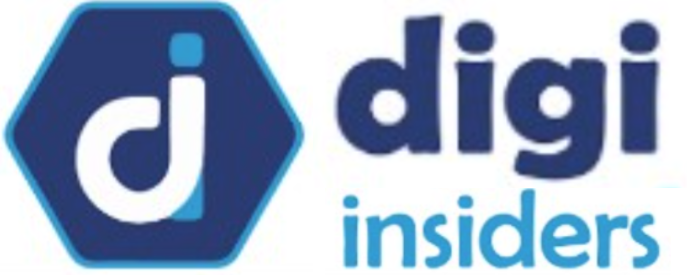Maximizing ROI with Pay-Per-Click Advertising

Pay-Per-Click (PPC) advertising is a digital marketing method where advertisers are charged a fee each time their advertisement is clicked. This approach allows businesses to purchase website visits rather than relying solely on organic traffic. PPC enables advertisers to bid for ad placement in search engine sponsored links when users search for keywords related to their products or services.
This strategy can effectively drive targeted traffic to websites and generate leads and sales. PPC advertising is available on various platforms, including search engines like Google, Bing, and Yahoo, as well as social media sites such as Facebook, Instagram, and LinkedIn. Search engine advertising is the most common form of PPC, where advertisers compete for ad placement in sponsored links.
When users search for relevant keywords, the advertiser’s ad may appear at the top or bottom of the search results page. The cost of PPC advertising varies based on keyword competitiveness and campaign quality. Advertisers should familiarize themselves with PPC fundamentals, including its mechanics, available platforms, and potential advantages and challenges.
This knowledge is crucial for developing effective PPC strategies and maximizing return on investment.
Key Takeaways
- Pay-Per-Click (PPC) advertising is a form of online marketing where advertisers pay a fee each time their ad is clicked.
- Setting clear goals and objectives for your PPC campaign is crucial for measuring success and optimizing performance.
- Conducting thorough keyword research and selection is essential for targeting the right audience and maximizing ad visibility.
- Creating compelling ad copy and landing pages is key to capturing the attention of potential customers and driving conversions.
- Implementing A/B testing and continuous optimization allows for testing different ad elements and refining strategies for better results.
Setting Clear Goals and Objectives for Your PPC Campaign
Common Goals for PPC Campaigns
Some common goals for PPC campaigns include increasing website traffic, generating leads, boosting sales, and raising brand awareness. By defining specific and measurable goals, advertisers can better track the success of their campaigns and make informed decisions about budget allocation and optimization efforts.
Establishing Key Performance Indicators (KPIs)
In addition to setting goals, it’s crucial to establish key performance indicators (KPIs) that will be used to measure the success of the campaign. KPIs may include click-through rate (CTR), conversion rate, cost per acquisition (CPA), return on ad spend (ROAS), and more.
Driving Meaningful Outcomes and Maximizing ROI
By identifying these KPIs upfront, advertisers can monitor and analyze the performance of their campaigns and make adjustments as needed to improve results. Setting clear goals and objectives for a PPC campaign is essential for driving meaningful outcomes and maximizing return on investment (ROI).
Conducting Thorough Keyword Research and Selection
One of the most critical aspects of a successful PPC campaign is conducting thorough keyword research and selection. Keywords are the foundation of PPC advertising, as they determine when and where an ad will appear. It’s essential to identify relevant keywords that are highly searched by the target audience and have the potential to drive quality traffic to the website.
Keyword research tools like Google Keyword Planner, SEMrush, and Ahrefs can help advertisers discover new keyword ideas, analyze search volume and competition, and identify long-tail keywords that are more specific and less competitive. Once relevant keywords have been identified, it’s important to prioritize and select the most valuable ones for the campaign. This involves considering factors such as search volume, competition, relevance to the business offering, and user intent.
Advertisers should also consider negative keywords, which are terms they do not want their ads to show for. By conducting thorough keyword research and selection, advertisers can ensure that their PPC campaigns are targeting the right audience with the right keywords, ultimately leading to higher click-through rates and better conversion rates.
Creating Compelling Ad Copy and Landing Pages
| Metrics | Ad Copy | Landing Pages |
|---|---|---|
| Click-Through Rate (CTR) | 5% | 3% |
| Conversion Rate | 10% | 15% |
| Engagement | 20% | 25% |
In PPC advertising, creating compelling ad copy and landing pages is crucial for capturing the attention of potential customers and driving conversions. Ad copy should be concise, relevant, and persuasive, with a clear call-to-action that encourages users to click on the ad. It’s important to highlight unique selling points, promotions, and offers to differentiate the ad from competitors and entice users to learn more.
Advertisers should also consider using ad extensions like sitelinks, callouts, and structured snippets to provide additional information and improve ad visibility. Once a user clicks on an ad, they should be directed to a relevant landing page that provides a seamless and compelling user experience. The landing page should align with the ad copy and offer valuable content or products that fulfill the user’s search intent.
It’s important to optimize landing pages for mobile devices, ensure fast loading times, and include clear calls-to-action that guide users towards desired actions such as making a purchase or submitting a lead form. By creating compelling ad copy and landing pages, advertisers can improve the performance of their PPC campaigns and increase the likelihood of converting clicks into valuable leads or sales.
Implementing A/B Testing and Continuous Optimization
A/B testing is a method of comparing two versions of an ad or landing page to determine which one performs better. By testing different elements such as headlines, ad copy, images, calls-to-action, and landing page layouts, advertisers can identify which variations drive higher click-through rates and conversion rates. A/B testing allows advertisers to make data-driven decisions about campaign optimization and improve overall performance.
Continuous optimization is an ongoing process of refining and improving PPC campaigns based on performance data and insights. This involves monitoring key metrics like CTR, conversion rate, cost per click (CPC), and ROAS, as well as analyzing user behavior and engagement on the website. Advertisers can use this data to make adjustments to bidding strategies, targeting options, ad creatives, and landing page content in order to maximize results.
By implementing A/B testing and continuous optimization, advertisers can refine their PPC campaigns over time and achieve better outcomes.
Monitoring and Analyzing Performance Metrics
Key Metrics to Track
Advertisers should regularly review key metrics such as click-through rate (CTR), conversion rate, cost per acquisition (CPA), return on ad spend (ROAS), impression share, and quality score to gauge the success of their campaigns. It’s essential to track these metrics at both the campaign level and the individual keyword or ad group level to gain insights into what is working well and what needs attention.
Qualitative Data Insights
In addition to quantitative metrics, qualitative data such as user behavior on the website can provide valuable insights into campaign performance. Advertisers can use tools like Google Analytics to track user engagement, bounce rates, time on site, and other relevant metrics that indicate how users are interacting with the website after clicking on an ad.
Data-Driven Decision Making
By monitoring and analyzing performance metrics, advertisers can make informed decisions about budget allocation, keyword targeting, ad creative optimization, and other aspects of their PPC campaigns.
Leveraging Remarketing and Retargeting Strategies for Increased ROI
Remarketing and retargeting are powerful strategies for re-engaging with users who have previously visited a website or interacted with an ad but did not convert. By using tracking pixels or cookies to identify these users as they browse other websites or social media platforms, advertisers can show targeted ads to encourage them to return to the site and complete a desired action. Remarketing ads can be tailored based on the specific pages or products that users viewed, providing a personalized experience that increases the likelihood of conversion.
In addition to standard remarketing strategies, advertisers can also leverage dynamic remarketing to show personalized ads featuring products or services that users previously viewed on the website. This highly targeted approach can significantly increase conversion rates by reminding users of products they were interested in and prompting them to make a purchase. By implementing remarketing and retargeting strategies, advertisers can maximize the value of their PPC campaigns by re-engaging with potential customers who are already familiar with their brand or offerings.
In conclusion, Pay-Per-Click advertising is a powerful digital marketing strategy that can drive targeted traffic to websites and generate leads and sales. By understanding the basics of PPC advertising, setting clear goals and objectives, conducting thorough keyword research and selection, creating compelling ad copy and landing pages, implementing A/B testing and continuous optimization, monitoring and analyzing performance metrics, and leveraging remarketing and retargeting strategies, advertisers can maximize the effectiveness of their PPC campaigns and achieve increased ROI. With careful planning, strategic execution, and ongoing optimization efforts, PPC advertising can be a valuable tool for businesses looking to expand their online presence and drive meaningful results.
FAQs
What is Pay-Per-Click (PPC) advertising?
Pay-Per-Click (PPC) advertising is a digital marketing model in which advertisers pay a fee each time their ad is clicked. It is a way of buying visits to your site, rather than attempting to “earn” those visits organically.
How does Pay-Per-Click (PPC) advertising work?
In PPC advertising, advertisers bid on specific keywords relevant to their target audience. When users search for these keywords on search engines, the ads are displayed. Advertisers only pay when their ad is clicked, hence the name “pay-per-click.”
What are the benefits of Pay-Per-Click (PPC) advertising?
Some benefits of PPC advertising include immediate visibility, targeted reach, control over budget and targeting, measurable results, and the ability to adjust campaigns in real-time.
What are some popular Pay-Per-Click (PPC) advertising platforms?
Some popular PPC advertising platforms include Google Ads (formerly known as Google AdWords), Bing Ads, and social media platforms like Facebook Ads and LinkedIn Ads.
How do I measure the success of a Pay-Per-Click (PPC) advertising campaign?
The success of a PPC advertising campaign can be measured using key performance indicators (KPIs) such as click-through rate (CTR), conversion rate, cost per click (CPC), return on ad spend (ROAS), and overall return on investment (ROI).
What are some best practices for Pay-Per-Click (PPC) advertising?
Some best practices for PPC advertising include conducting thorough keyword research, creating compelling ad copy, optimizing landing pages, setting realistic budgets, and continuously monitoring and optimizing campaigns for better performance.






